Invariably, if you have chickens, you’ll be making room for new hens sooner or later. (You know the saying, you can’t have just one, right?) Making room for new hens comes about when you need to add to your flock (through the aging or death of your current hens), or someone finds out you have chickens and asks you to adopt theirs, or you just happen to be at the feed store when the new chicks are out…sooner or later it will bite you…and there are ways to make the transition easier! Here are some tips.
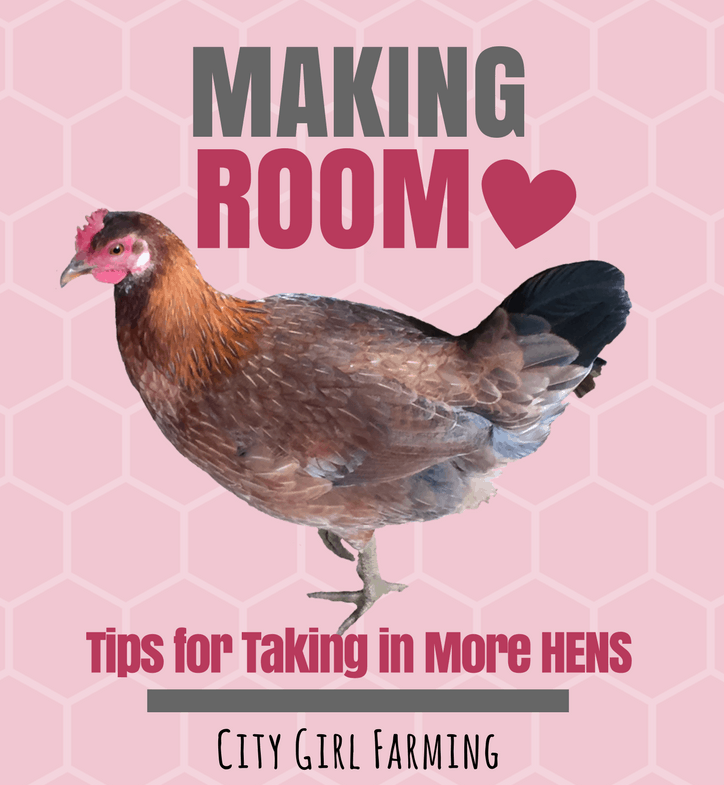
I’ve been making room a lot lately. I think I’m getting a reputation for taking in hens that need a new place to live. Some people collect trinkets. I collect birds that have no where else to go.
It all started back a couple of years ago with Millie, the battered hen that was going to be put down by her exasperated owners because their flock wouldn’t quit picking on her. I took in bald little Millie and worked hard to help her heal and become part of my flock. (Here’s her story.) She’s beautiful and doing great now.
Then, friends who were moving, needed a place for their three hens to live. So, Dorian, Mildred and Julio came to live with my flock. They’re sweet girls raised with a lot of TLC.
Then someone dumped their Bantam rooster at the end of driveway one day. While Cooper doesn’t generally sleep with my hens at night, he does hang out with them during the day (he sleeps in my friend’s coop on the other side of the property).
Last summer I also added a few new chicks to the mix. (Of course I did!) Florence, Rosemary, Jane, Louise, and Princess Gretchen Rosalie.
And recently, a friend of a friend, overwhelmed by the young hens that she’d allowed her mature hens to hatch, needed a place to relocate them. We took eight here on the farm. I kept 4 and gave the other 4 to my friend.
Whew.
Luckily, at the start of all this collecting, my flock was down to only three so I had room to grow. But there’s a lot of juggling that happens to help everyone get along and to keep everyone safe.
If you’re thinking about making room in your coop for more hens, here are some things to consider:
DO YOU HAVE A SEPARATE PLACE TO KEEP THE NEW GIRLS FOR A FEW DAYS UP TO A FEW WEEKS?
Ideally, this place should be separate from the main flock, but with opportunity for them to see each other. Separating them is good for two reasons. First, if you throw them all in together, someone is going to get hurt. But if they can see each other (but not have access to each other) they will get used to each other being around. This will GREATLY reduce the hostility when they finally meet face to face (without a fence/cage/protection) between them.
Also, keeping them separated helps you protect your flock. Sick chickens work hard to appear healthy. You never know what you’re bringing onto the property when you allow a new batch of birds to move in. If they’re separated, you can watch them for a while and make sure they’re healthy.
The space I use is a 15 foot dog run (that’s covered with both wire and a tarp) with an extra-large dog house (that’s been converted to a chicken coop). New residents to the farm live in this space while both me and my flock check them out. But even if you don’t have a separate living space like this, can you create something, even temporarily, within what you have?
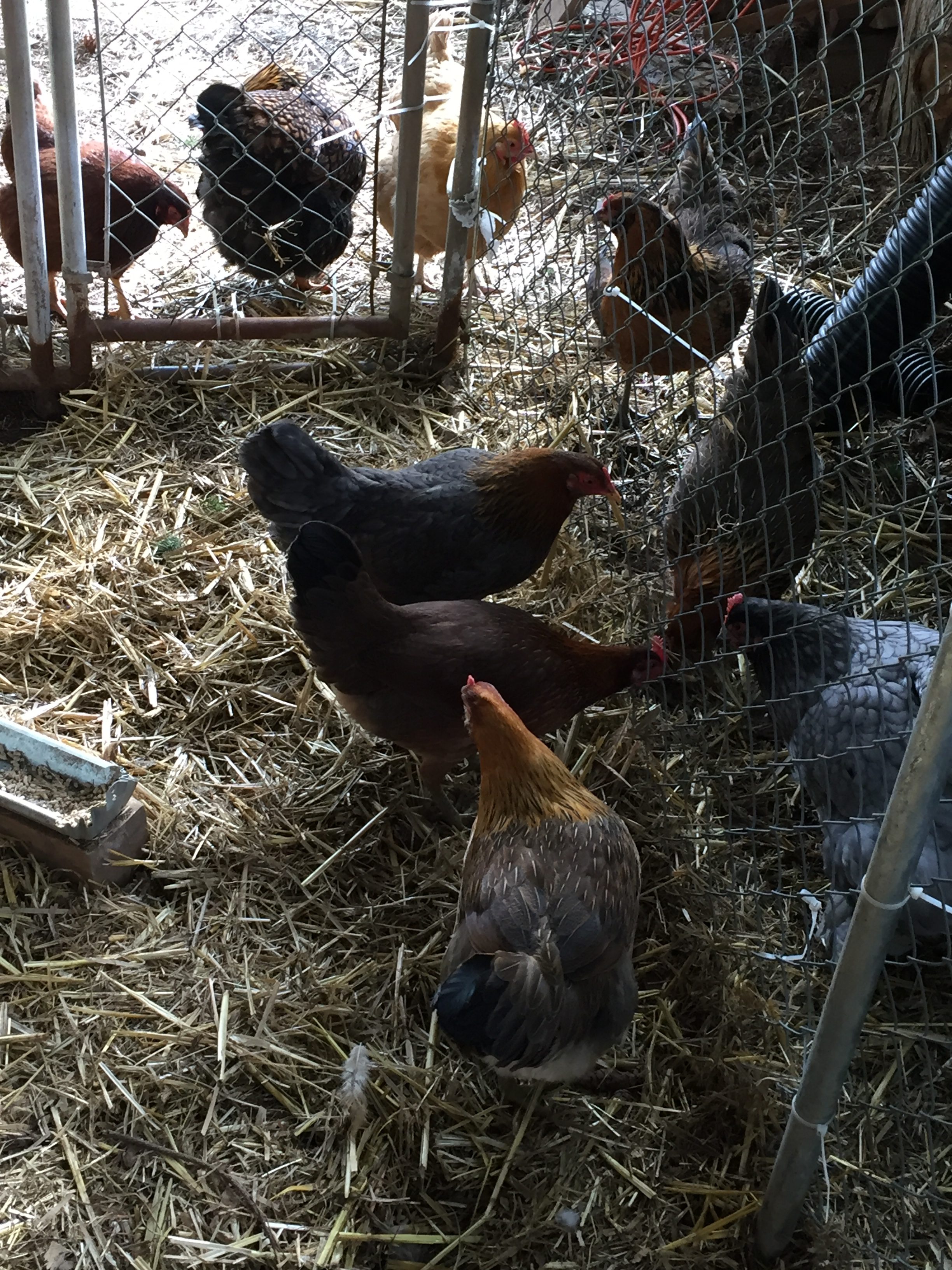
DO YOU HAVE ENOUGH ROOM IN YOUR COOP?
The more room the better, when it comes to adding extra chickens to your existing space. But, at least 4 square feet per hen is a good measure (minimally) when considering if your coop has enough space for more hens. The same goes for the run. Even if you allow your hens to free range, there’s still ‘cooped up’ time where they’ll be all cramped together. Space in the run (where they spend most of their awake time–unless they’re out free ranging) needs to be more per hen than inside the coop: aim for at least 10 square feet per chicken (again, minimally).
IS THERE ENOUGH ROOST SPACE?
Roost space should ideally be 12-18 inches or more per bird. Yes, they some times squeeze up together, but giving them that choice saves a lot of squabbling as everyone heads to bed.
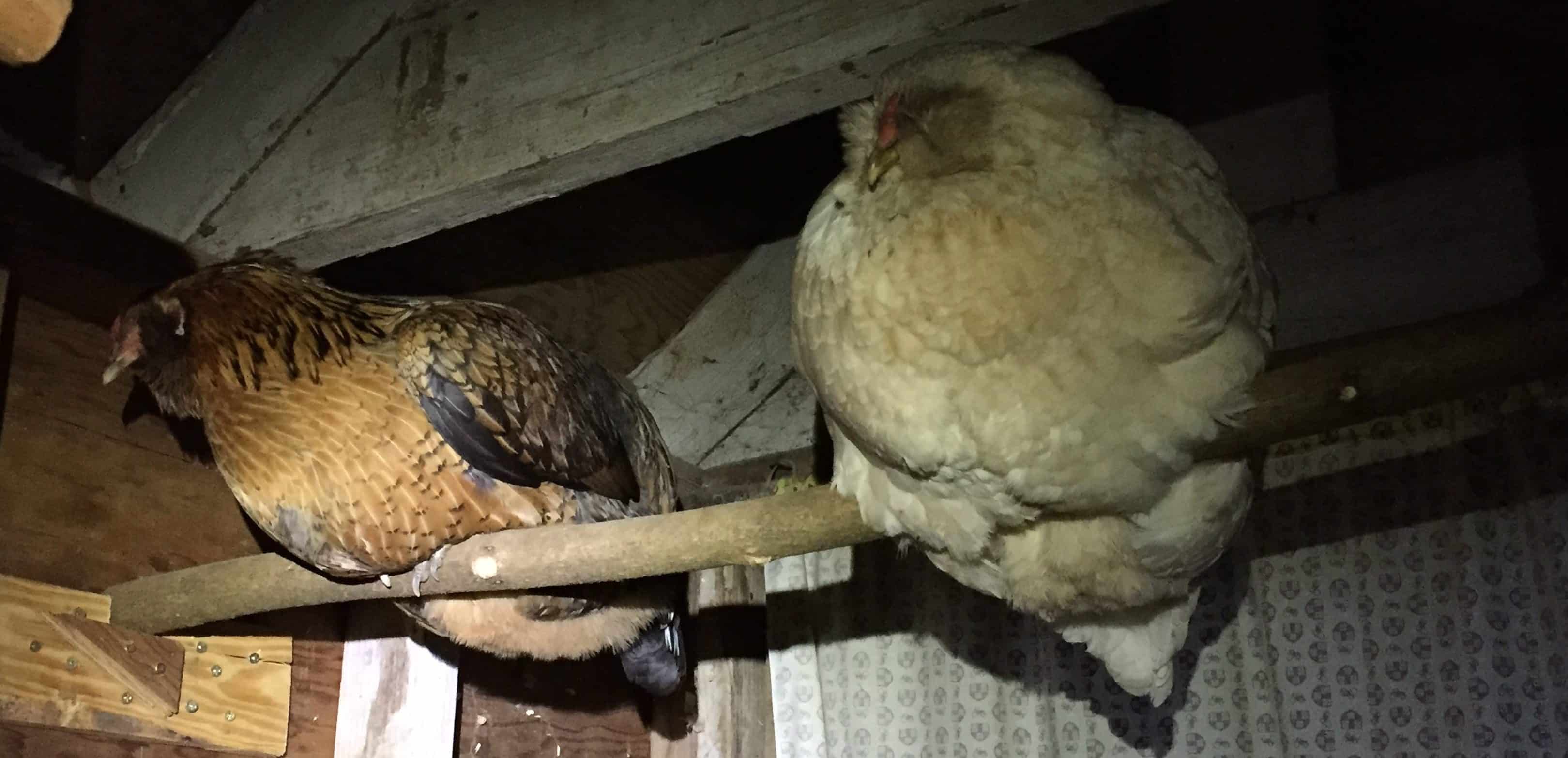
ARE THERE ENOUGH NEST BOXES?
Nest boxes should be at a ratio of 3-5 birds per box. Although, if your birds are like mine, they will all want the same ONE box and wait in line for it. But again, giving them options will cut down on fighting. And sometimes more than one of them needs to lay an egg at the same time so having space/options helps.
IS THERE MORE THAN ONE FOOD/WATER CONTAINER?
Having more than one spot to get food and water is ideal for any flock. It allows the lowest hens in the pecking order to access to food and water, even if the higher ranking birds are trying to keep them from it. But it’s even more essential when adding new hens to the mix as fights will break out faster over food than anything.
ARE YOU PREPARED FOR MORE?
While caring for 3 chickens is nearly the same as caring for 15, there are things to consider. First, 15 chickens make a lot more poo. A hen contributes about 45 pounds of poo per year. Going from 3 to 15 hens ups the poo supply by nearly 550 extra pounds!
The same with food. While how much to feed a hen varies (by time of year, if they free range, etc.), let’s just say it’s roughly 1/4 pound of food per hen per day. Three hens only requires 3/4 of a pound per day, while 15 hens require almost 4 pounds of food per day. That’s a big difference.
Of course, if they’re laying, what’s not to love about having eggs from 15 chickens verses only three?
MY NEWEST ARRIVALS
While my latest batch of girls (Slate, Flutter, Lottie and Gabby) integrated into the flock nearly seamlessly, they weren’t being allowed to use the nest boxes. This might not have been so tragic except that the new girls, in response, started laying their eggs in the furthest away corner of the coop (the hardest area in all the coop to reach). After a few days of bending in ways my body is NOT accustomed to, I decided I needed to make another nest box. I just used an old milk crate and built a small wooden platform for it to sit on. I placed it on the opposite side of the coop from the other boxes and it’s working perfectly. It’s actually becoming the favorite box for everyone. Of course.
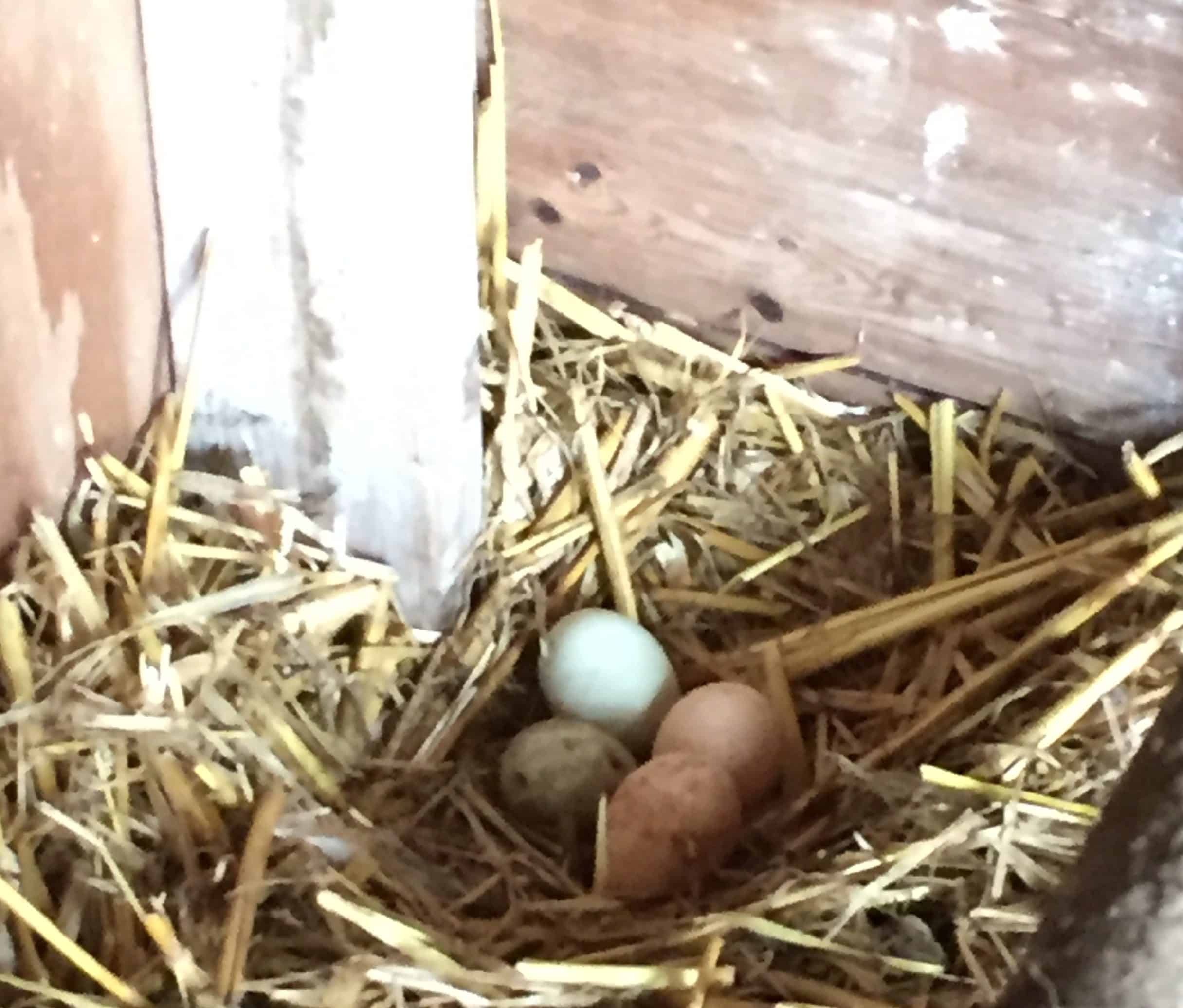
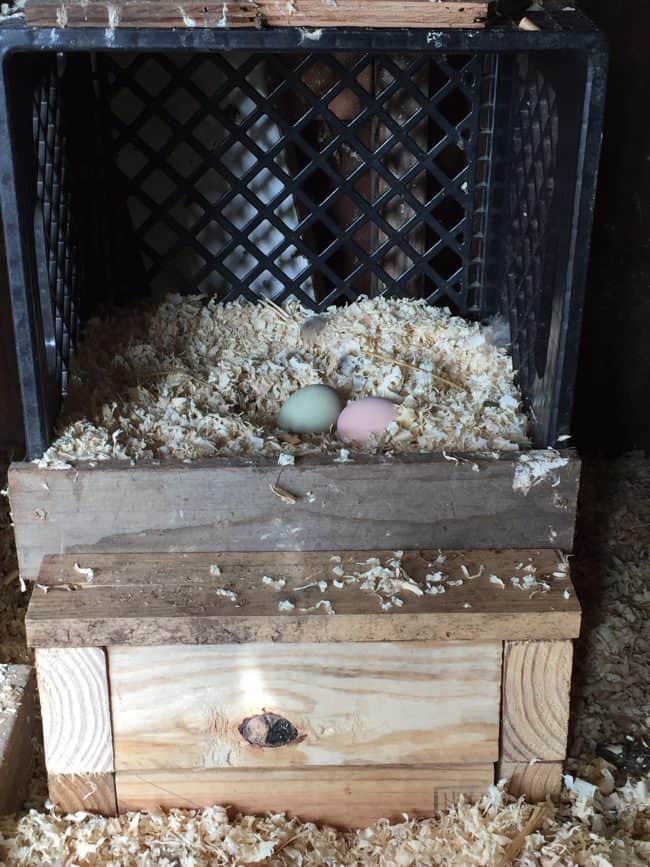
And while there was plenty of space on the roosts, I figured out one more place to add a high roost (the new hens are mixed breeds, but are much more sleek and light than most of the rest of my flock) and I thought they might like it up higher (they do). Now, this is also a favorite spot to roost for some of my other girls as well. They are so like children! They all want what each other like best.
Sooner or later I will run out of space to accommodate more hens that need a place to live. Right now my flock is completely integrated and happy. And my reward is 8-12 fresh multi-colored eggs every day. And lots of chicken entertainment. I wouldn’t trade a thing.